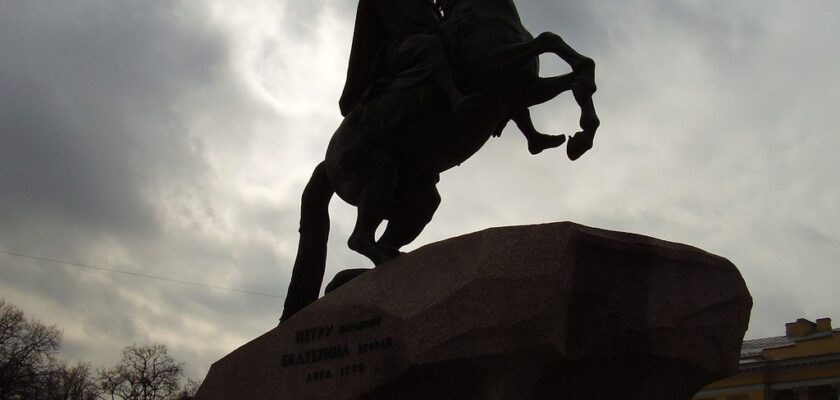The Bronze Horseman monument in St. Petersburg
The equestrian statue of Russian Emperor Peter the Great, known as the Copper Horseman Monument, is located on Senate Square in St. Petersburg. It is one of the most famous landmarks of the Northern Capital, the image of which can be found on postcards and stamps, envelopes and tourist guides. The silhouette of the bronze giant (it got its name “Bronze Horseman” thanks to the eponymous work of Alexander Pushkin) is so recognizable that it is associated exclusively with the city on the Neva River, so it is rightly called the visiting card of St. Petersburg.
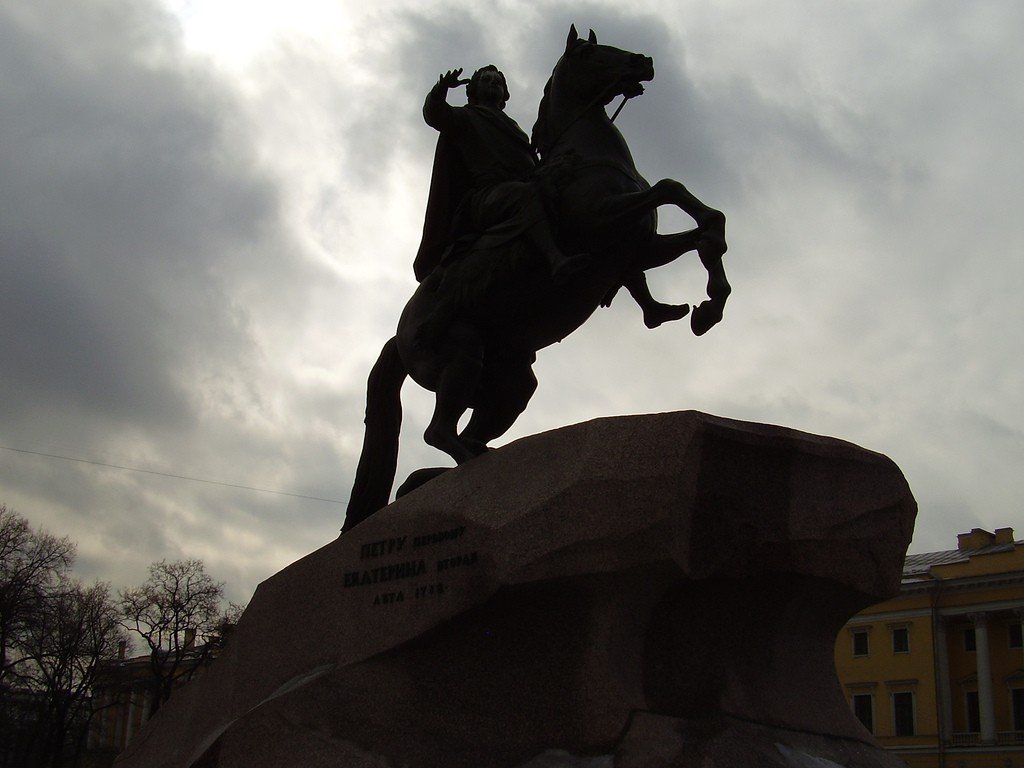
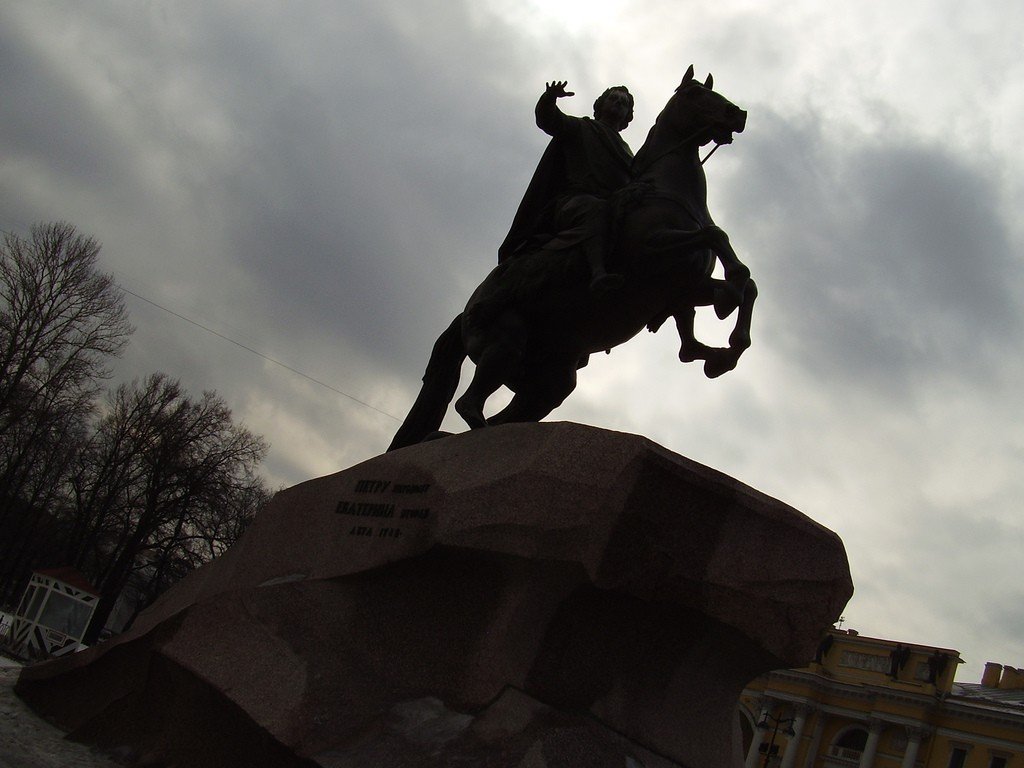
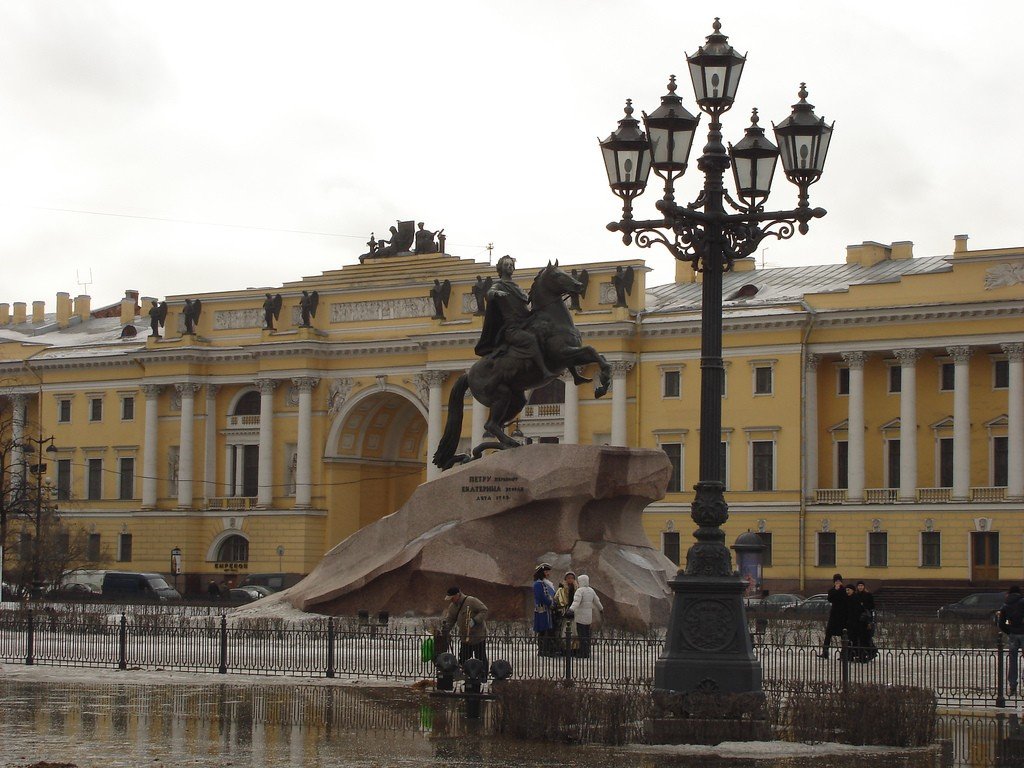
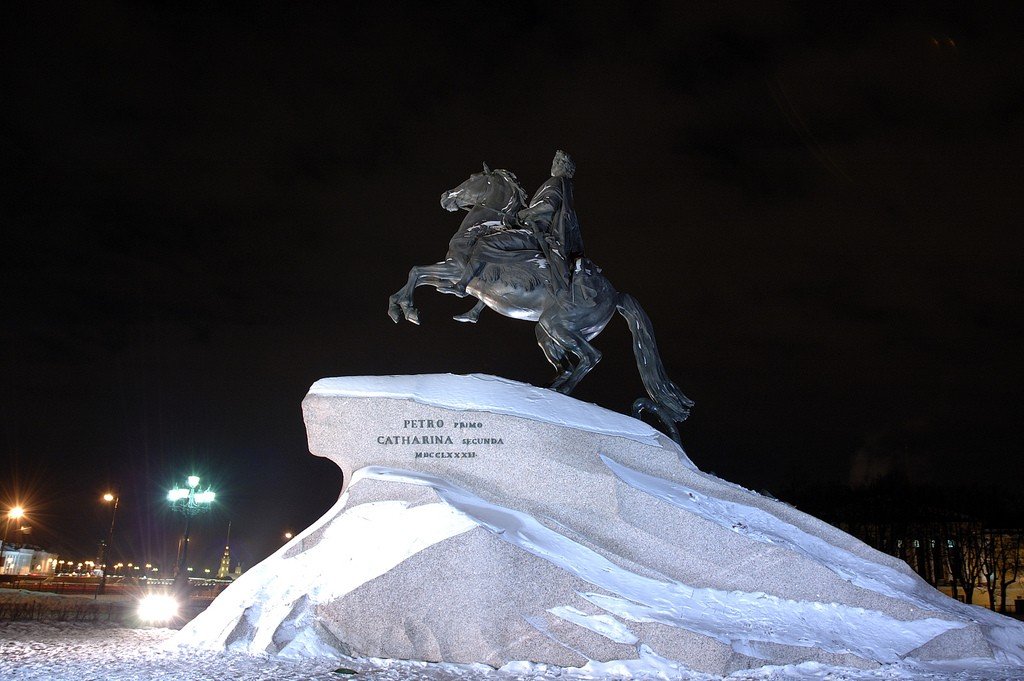
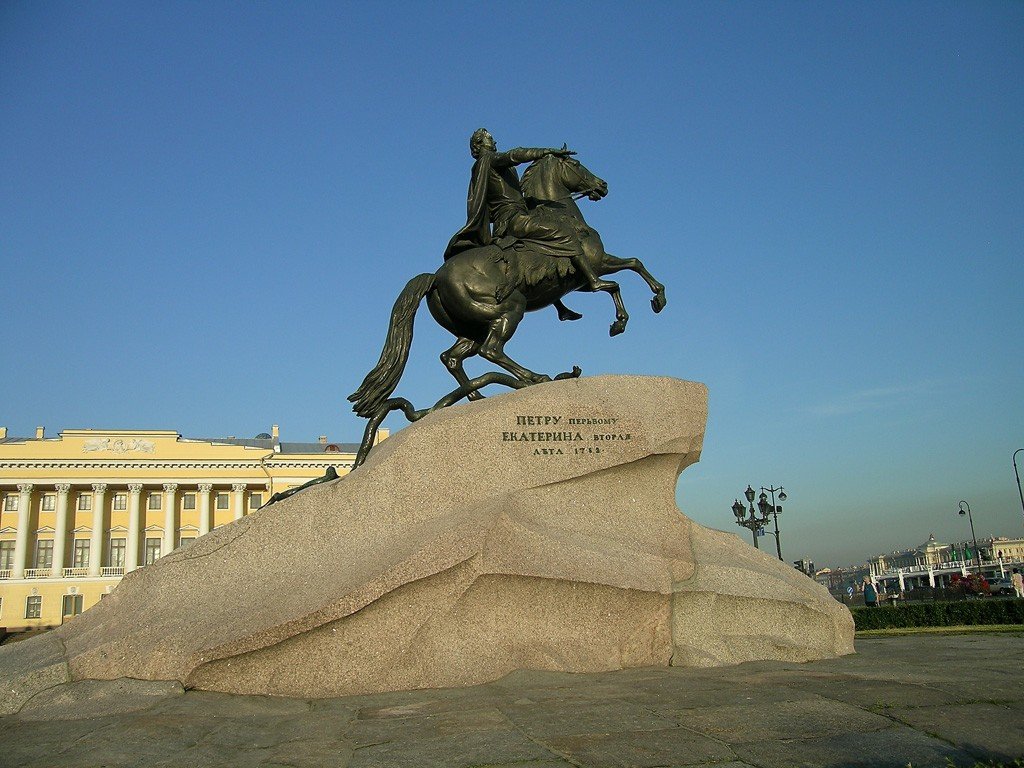
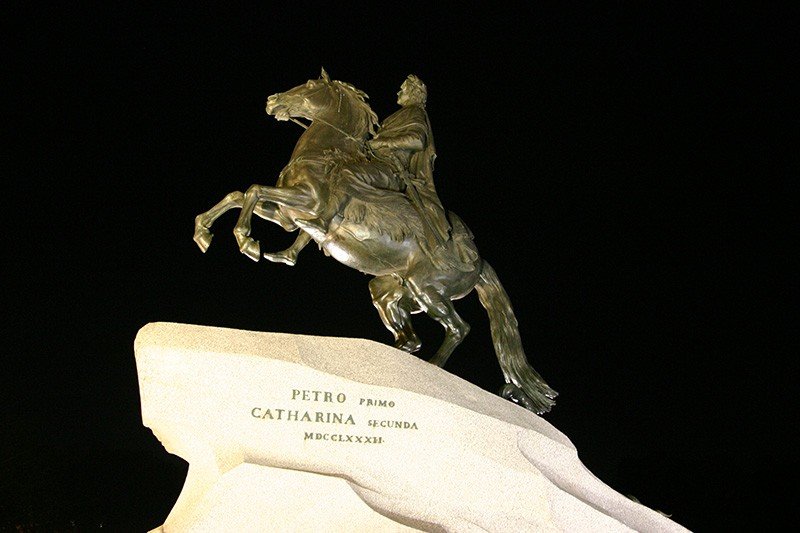
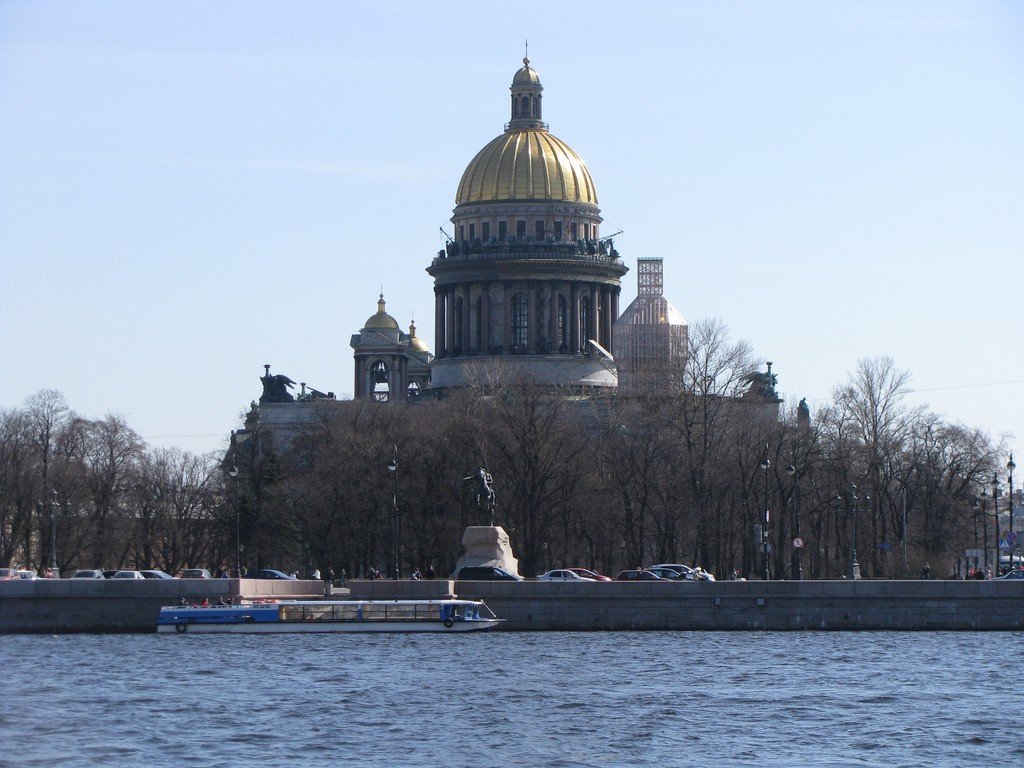
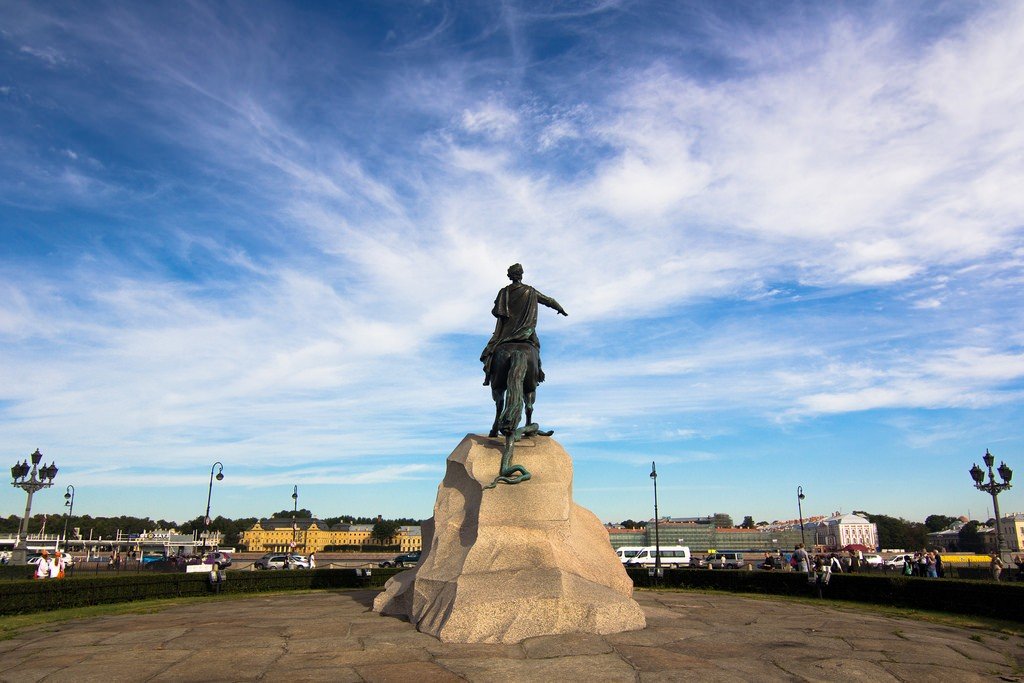
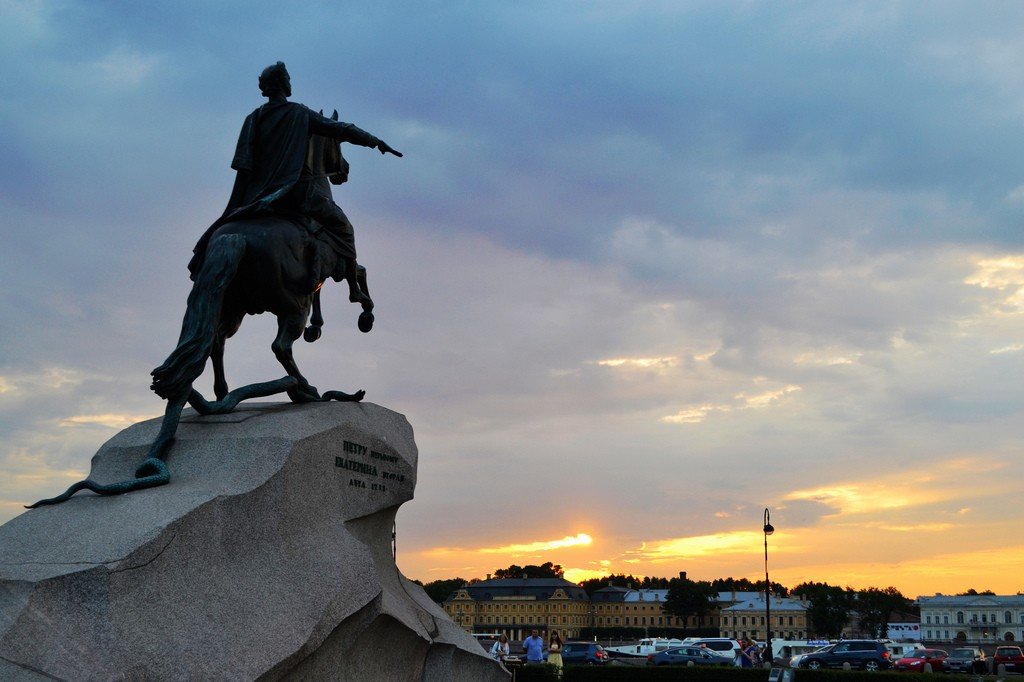
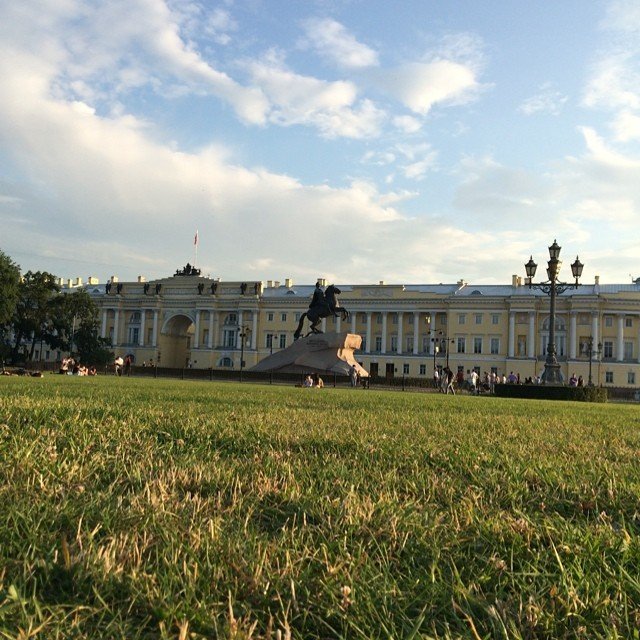
- Highlights
- Instead of a monument to Catherine II
- How the Bronze Horseman was created
- Interesting facts, myths and legends
- How to get there
Highlights
The sculpture appeared on this place more than two hundred years ago, but the interest in it is so lively and enduring, as if the legendary statesman embodied in this creation has recently become part of our history. However, we should not be surprised: modern Russia is experiencing such an upswing and at the same time faces such global challenges that the present time is often compared by many to the Peter era.
.
The Bronze Horseman also has its own history – full of events and facts, myths and legends. The search for foundrymen, the skepticism of many masters that such a monument can be created at all, the difficulties with the delivery of a huge stone as a pedestal and other moments leave no doubt – it was erected, if I may say so, in the bustle and difficulties. However, cast in metal Peter the Great worthily overcame them, reaching our days in pristine condition, symbolizing the greatness and power of the Fatherland.
.Instead of the monument to Catherine II
The Bronze Horseman monument might not have seen the light of day if not for the good will of Empress Catherine II. More precisely her wise and far-sighted calculation.
.For Sophia Augusta Frederica of Anhalt-Zerbst, the great predecessor on the Russian throne was the absolute authority in everything. By initiating various reforms or inviting the most talented writers, painters and sculptors to St. Petersburg, the autocrat emulated Peter the Great. She was a progressive person and readily absorbed everything new in science and philosophy. Not for nothing the era of Empress Catherine Alexeevna entered the national history under the name “the age of enlightened absolutism”, and also as “the union of philosophers and monarchs.”
The merits of the great empress were appreciated even during her lifetime. Contemporaries even talked about erecting a monument in her honor. The idea of being immortalized in bronze or any other metal, of course, flattered the former Prussian princess, who became the head of the largest country in the world. But in the end she decided to immortalize for posterity not herself, but Peter, who went down in history as a reforming tsar. Thus she intended to consolidate in the public consciousness the idea that her reforms were a continuation of Peter’s reforms and that she was a worthy successor of them. In favor of this decision spoke and the calendar: just approaching the 100th anniversary of the accession to the throne of Peter I, and the best date for the implementation of this idea was not to find.
.
Having suppressed the ego-boosting dreams of her own monument, Catherine the Great ordered to cast a monument to his predecessor. The task was entrusted to the Russian sculptor, architect and artist Bartolomeo Rastrelli, but the Empress did not like the version prepared by him. What to do? The French philosophers Voltaire and Denis Diderot, with whom the enlightened tsarina was in active correspondence, and whose opinion was especially valuable to her, came to her aid. They advised to turn to the services of the famous French sculptor Etienne-Maurice Falcone. In 1766 Dmitry Alekseevich Golitsyn, who served as Minister Plenipotentiary at the court of Louis XV, handed the 50-year-old Master an official invitation to Russia.
Falcone was known as a man intelligent, delicate, refined and unselfish, all his life dreamed of showing his talent in monumental art. He realized that such a chance he may no longer have and therefore unconditionally accepted the offer of the Russian diplomat, who promised for the work of only 200 thousand livres – a reward for such a grandiose project more than modest. In August 1766 settled all the formalities: signed a contract in which they agreed on the general shape and size of the monument, the amount of the fee and the timing of the order, as well as the obligation of the sculptor not to be distracted by other orders, while he will work on the monument to Peter the Great.
.How the Bronze Horseman was created
Suggestions about what the emperor cast in metal should look like sounded very different. Ivan Ivanovich Belsky, who headed the Russian Academy of Arts, suggested that he should be sculpted with a rod in his hand and at full height. State Counselor Shtelin saw Peter surrounded by other statues, allegorically depicting Victory, Justice, Prudence and Hard Work, and which with their feet would prop up the worst human qualities – Deceit, Envy, Sloth and Ignorance. Catherine II also gave her idea: she believed that Peter should certainly be with a rod and scepter and sit on a horse.
.
Falcone did not want to embody in the monument neither the image of the victorious monarch, nor images of allegories. He believed that his work should show Peter I, first of all, as an outstanding personality – the personality of the benefactor and builder of his country. He worked on the plaster model of the Bronze Horseman in the former temporary Winter Palace of Empress Elizabeth Petrovna, located at the corner of Nevsky Prospekt and Moika Embankment (the residence has not survived to this day). The master was “posed” by a Guards officer, as well as Brilliant and Caprice – two stately horses of the “Eagle” breed. The Frenchman watched attentively as the guardsman literally took off on one of them on the platform, putting the horse on the rack, and made numerous sketches along the way. The Empress was especially picky about the model of Peter the Great’s head, because of which the sculptor remodeled it several times.
.
The 17-year-old Marie-Anne Collot, Falcone’s pupil, whom he brought with him to Russia as an apprentice, also proposed her own head design. This solved the problem: Catherine liked the sketch. And so much so that for the work done the girl was assigned a lifetime salary of 10 thousand livres and accepted into the Russian Academy of Arts. In her performance, the face of the Emperor, illuminated by deep thought, with wide-open eyes, expressed courage and will. And here over the snake, that under the feet of the horse, worked Russian sculptor Fyodor Gordeev.
.So, the plaster model of the Bronze Horseman was not without difficulties and heated debates by 1769. It would seem that all the difficulties were over. But there were new challenges ahead. First, the Empress did not like the model in general, because the Frenchman did not listen to her suggestions and arbitrarily chose the image of the monument. Secondly, the monument was to be cast in bronze. Falcone calculated that it will keep its balance only if its front walls to perform very thin, no more than a centimeter. Domestic foundry workers did not agree with such calculations. They did not want to take on the work also because of the colossal size of the sculpture. Foreign masters were not afraid of anything, but for their services they demanded quite a lot of money.
.
After some time, the foundryman was finally found. It turned out to be Emelyan Khaylov, a cannon maker. Together with the French sculptor, he selected the alloy of the right composition and made samples. The actual casting of the monument started in 1774 and was carried out according to an incredibly complex technology. It was necessary to ensure that the front walls were as thick as the rear walls, which would give the composition the necessary stability. But here was a problem: the pipe through which the molten bronze flowed into the mold suddenly burst, spoiling the upper part of the monument. It had to be removed and three more years were spent on preparation for the second pour. This time fortune smiled on them, and everything was ready on time and without incident.
.
To commemorate the successful completion of the work Falcone wrote on the fold of Peter’s cloak that it was he who in 1788 “molded and cast” this sculpture. At the same time, his relations with Catherine II finally broke down, and the sculptor was forced to leave Russia with his pupil. From that moment on, the work to complete the monument was supervised by Academician Yuri Matveyevich Felten. It was according to his drawings that the machine that delighted everyone was made, which was used to transport the “Thunder Stone” that formed the basis of the pedestal of the Bronze Horseman.
.
Speaking of the “Thunder-stone”. It was found in the vicinity of the village of Konnaya Lakhta by a peasant Semyon Vishnyakov, who responded to an appeal in the “St. Petersburg Vedomosti”. The megalith weighed 1600 tons and when it was taken out of the ground, it left behind a huge pit. It was filled with water and a pond was formed, called Petrovsky Pond, which has survived to this day. To bring the stone to the place of loading, it was necessary to overcome almost 8 kilometers. But how? They decided to wait for winter so that the frozen soil would not subside under its weight. Transportation began on November 15, 1769 and ended on March 27, 1770 (old style) on the shore of the Gulf of Finland. By that time a wharf had been built here for shipping the giant. In order not to lose precious time, the stone began to be hewn as it was being moved. However, the Empress forbade to touch it: the future pedestal should arrive in the capital in its natural state! The “Thunder Stone” found its present appearance already on Senate Square, having “lost a lot of weight” after processing.
.
Interesting facts, myths and legends
The Monument of the Bronze Horseman, the main symbol of Northern Palmyra, immortalizing Peter the Great on a surging horse, was unveiled on August 7, 1782. In honor of the long-awaited event, a military parade was held, led by Prince Alexander Golitsyn. Catherine II arrived at the festivities in a dinghy on the Neva River. Climbing to the balcony of the Senate building, she put on a crown and dressed in porphyry and signaled that the festivities could begin. In a bitter irony of fate, Falcone himself was not even deigned to be invited to the event.
.
The French sculptor’s monumental creation impressed those present at the ceremony with its majesty and amazing completeness of the image. It seems that even the Empress herself, who ordered to leave on the pedestal inscription “Catherine II to Peter I”, had time to forget that the monument she originally saw quite different. And certainly no one thought that the Bronze Horseman would be followed by a trail of myths and legends, not to mention just noteworthy facts. And hardly from the day of installation.
If the supporters of the tsar-reformer said that the monument embodies the power and greatness of the Russian Empire, and no enemy, as long as the rider is on his pedestal, will not be able to crush it, Peter’s opponents held the opposite point of view. They did not fail to declare that the monument was very much like the Horseman of the Apocalypse predicted in the Bible, and that its appearance in the very heart of the capital was a harbinger of suffering and death throughout the country.
.
The fame of the amazing monument soon spread far beyond St. Petersburg. In the hinterland even arose its own version of its appearance. Allegedly, Tsar Peter once invented an amusement for himself: he sat on a horse and jumped on it from one side of the river to the other. “Everything is God’s and mine!” – He exclaimed before the first jump. The same phrase he uttered before the second, also successful. The third time the sovereign, mistaking the words, said: “All is mine and God’s!” For such “insolence” the Almighty punished him by turning him to stone, and he remained forever a monument to himself.
And here is another legend – about a certain Major Baturin. The case was in the Patriotic War of 1812, when our troops were forced to retreat and the French were about to seize the capital. To prevent the enemy from getting the most valuable works of art, Emperor Alexander I ordered to take them out of the city. The monument of the Bronze Horseman was also to be transported. But then it becomes known that Major Baturin has the same dream, in which he sees himself on Senate Square, next to the monument. Peter the Great allegedly rides a horse off the pedestal and heads for Stone Island, where the residence of the sovereign was located. During the meeting he scolded Alexander: “What you, young man, have brought my Russia to. But as long as I am in place, my city has nothing to fear!” The unusual dream was first reported to Prince Golitsyn, a friend of the Tsar, and the latter retold it to the Emperor. The evacuation was canceled, and the monument remained in place. There is an opinion – though it is not confirmed by anything – that Pushkin based the plot of the poem “The Bronze Horseman” on this legend. The same motif can be traced in F. M. Dostoevsky’s novel “The Teenager.”
The poem “The Bronze Horseman” is based on this legend.Widespread in local folklore was also a myth about the ghost of Peter the Great, seen by Catherine II’s son Paul I, while he was not yet emperor. The Crown Prince, together with his friend Prince Kurakin, was walking in the very place where the monument now stands. And then they saw a man wrapped in a wide cloak, as if waiting for them. Having spoken to them, the ghost went to the middle of the square, pointed to the place of the future Bronze Horseman and said that he would be seen here again. Saying goodbye, he raised his hat, and the young men were almost numb with horror: the mysterious stranger was none other than Peter I.
The Bronze Horseman points with his hand in the direction of Sweden. Interestingly, in the center of Stockholm, the capital of this Scandinavian monarchy, there is a monument to Peter’s opponent in the Great Northern War – King Charles XII, whose left hand – coincidence? – points in the direction of Russia. Another interesting fact, as if confirming the dream of the mentioned Major Baturin. The monument remained in its place not only during the Patriotic War of 1812, but also during the Great Patriotic War of 1941-1945. During the terrible days of the siege of Leningrad it was covered with boards and logs and laid around with sandbags. Our country is known to have survived both of these wars…
.The bronze emperor and his horse have only been restored twice during its entire existence – in 1909 and 1976. At that time, it was analyzed with gamma rays for the condition of the frame of the sculptural composition. It showed that everything was in order. A capsule was even placed inside the monument: it contains a message about the restoration and a newspaper dated September 3, 1976. In Soviet times (1988), the State Bank put into circulation a commemorative 5-ruble copper-nickel alloy coin depicting the Bronze Horseman. It weighed 19.8 grams, the total circulation of the coin amounted to 2 million copies. Two years later, another commemorative coin, this time with a face value of 100 rubles and gold, 900th sample – from the historical series on the occasion of the 500th anniversary of the united Russian state. On it also placed the image of the monument to Peter the Great.
.How to get there
You can get to the Bronze Horseman by metro. Get off at the station “Admiralteyskaya” and, having found yourself on Malaya Morskaya Street, turn left and walk past St. Isaac’s Cathedral. Then from it you turn right and go to the Alexander Garden. The Senate Square with the monument installed on it is behind the garden.
.Another option: take the metro to one of the two stations – “Nevsky Prospekt” or “Gostiny Dvor”, get off at the Admiralty and Palace Square and, passing by, find yourself on Admiralty Avenue. Turning left from it, you reach Senate Square.
Or, if you do not want to walk, at the exit at the station “Nevsky Prospekt” transfer to the trolleybus (route numbers: 1, 5, 10, 11 and 22), get off at the stop “Pochtamtsky Lane” and go back to Konnogvardeysky Boulevard, having overcome on foot about 500 meters.
.